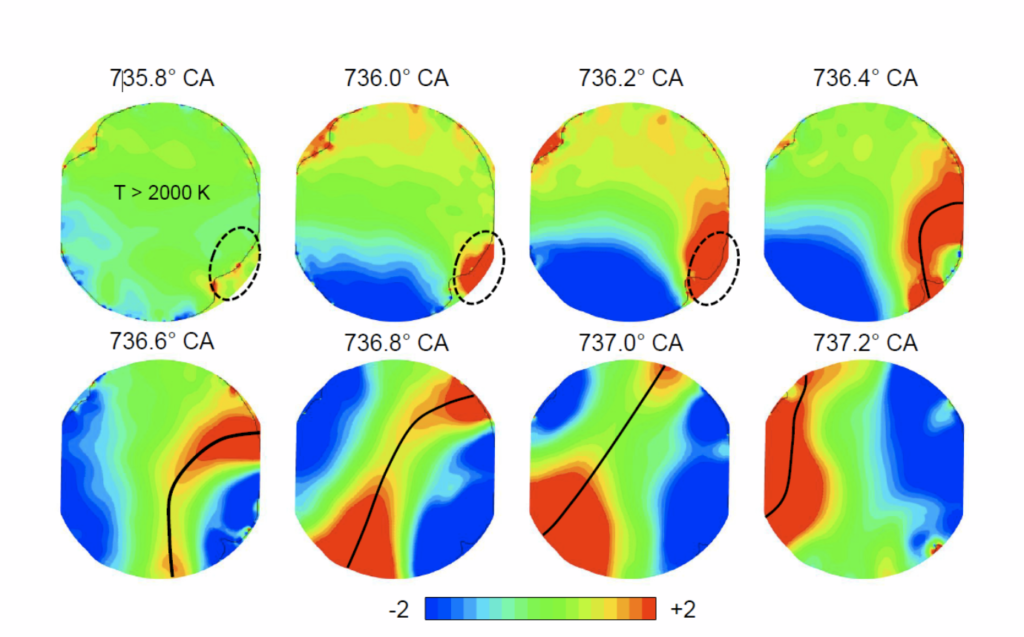
Author:
Sarani Rangarajan
Senior Research Engineer
The Convergent Science GmbH team is based in Linz, Austria and provides support to our European clients and collaborators alike as they tackle the hard problems. One of the most interesting and challenging problems in the design of high efficiency modern spark-ignited (SI) internal combustion engines is the prediction of knock and the development of knock-mitigation strategies. At the 2018 European CONVERGE User Conference (EUC), several speakers presented recent work on engine knock.
This winter, when I cold-started my car, I heard a loud knocking noise. Usually, though, knocking is more prevalent in engines that operate near the edge of the stability range. The first step of knocking is spontaneous secondary ignition (autoignition) of the end-gases ahead of the flame front. When the pressure waves from this autoignition hit the walls of the combustion chamber, they often make a knocking noise and damage the engine. Knock is challenging to simulate because you must correctly calculate critical local conditions and simultaneously track the pressure waves that are traveling rapidly across the combustion chamber.
To enable you to easily model these conditions, CONVERGE offers autonomous meshing, full-cycle simulation, and flexible boundary conditions. Adaptive Mesh Refinement allows you to add cells and spend computational time on areas where the knock-relevant parameters (such as local pressure difference, heat release rate, and species mass fraction of radicals that indicate autoignition) are rapidly changing. CONVERGE can predict autoignition with surrogate fuels, changing physical engine parameters, and a spectrum of operating conditions.
EUC keynote speaker Vincenzo Bevilacqua from Porsche Engineering presented an intriguing new approach (re-defining knock index) to evaluate the factors that may contribute to knock and to identify a clear knock limit. In another study, researchers from Politecnico di Torino investigated the feasibility of water injection as knock mitigation strategy. In yet another study, Max Mally and his colleagues from VKA RWTH Aachen University used RANS to successfully reproduce combustion and knock with a spark-timing sweep approach at various exhaust gas recirculation (EGR) percentages. You can see in the figure below that they were able to capture the moving pressure waves.

Advancing the spark, using lean burn, turbo-charging, or running at a high compression ratio can increase the likelihood of knock. However, each cycle in an SI engine is unique, and thus autoignition is not a consistent phenomenon. When simulating an SI engine, it is critical to simulate multiple cycles to identify the limits of the operating conditions at which knock is likely to occur. (Fortunately, CONVERGE can easily run multi-cycle simulations!)
Knock is one of the limiting factors in engine design because many of the techniques that improve the thermal efficiency and enable downsizing of the engine increase the likelihood of knock. Here at Convergent Science, we encourage you to solve the hard problems. Go on, knock it out of park.


